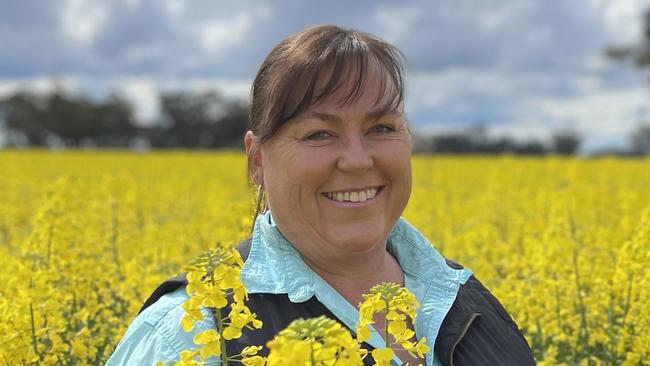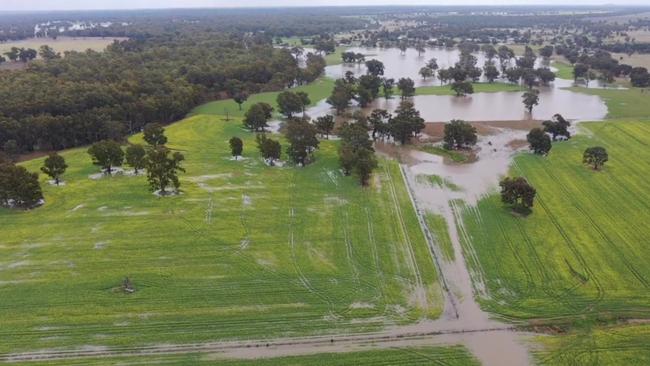Harvest 2022: The battle to break even
As harvest starts, some farmers are battling increasingly tough conditions. And some are expecting “potentially devastating” losses.
As harvest gets under way in NSW and Victoria, the realisation is sinking in that some weather-damaged crops will barely pay back farmers’ input and operations costs.
Riverine Plains chair Fiona Marshall, who grows wheat, barley and canola across 3500ha at Rennie, in southeast NSW, sent up a drone and harvested a test strip of canola this week to find “potentially devastating” yield losses.
Ms Marshall’s crops started out the year with “the perfect amount of rain”. To capitalise on their potential, she invested heavily in fertiliser and chemicals at a time when prices were at record highs.
Six months later, yield losses in her canola could be as high as 80 per cent and barley losses could be up to 50 per cent due to wet weather and flooding. Wheat yield was looking exceptional, but entire paddocks could be inaccessible due to water channels.

Ms Marshall invested $872 per hectare to grow the canola, and would need to harvest 1.17 tonnes per hectare to break even. She expected about 0.75t/ha. The calculation for wheat was more positive, with an investment of $594 per hectare, a break even yield of 1.72t/ha and a potential yield of 3t/ha.
In the Central NSW wheatbelt, Hart Seeds managing director Rob Hart said growers around the towns of Temora, Ardlethan, West Wyalong, Forbes and Ungarie spent about $700/ha to sow, fertilise, treat and harvest their canola, and would be hoping to harvest 1t/ha to break even.
“Some people won’t get that,” Mr Hart said.
The cost of growing cereals in the district could be $500-$600/ha, and growers would need more than 2t/ha of wheat to offset their costs, but in badly water-damaged areas, 1-2t/ha would be harvested.
In Victoria’s southwest, Gorst Rural director Cam Conboy said 100mm of rain in November “took us over the edge”. In an area stretching from Ararat to Lake Bolac, Woorndoo, Mortlake and Hexham, 10 to 70 per cent of wheat and canola crops were potentially damaged or lost.

Canola costs in the area averaged $1400-$1600/ha, and growers would need to harvest 2t/ha to break even. Wheat costs were $1000-$1200/ha, and growers would need a yield of 2.7t/ha to 3t/ha to break even.
“All things being equal, we hope we can (bring in average yields). But people are realising how much they have spent of their crops and realising that some weather damage is starting to catch up with us,” he said.





